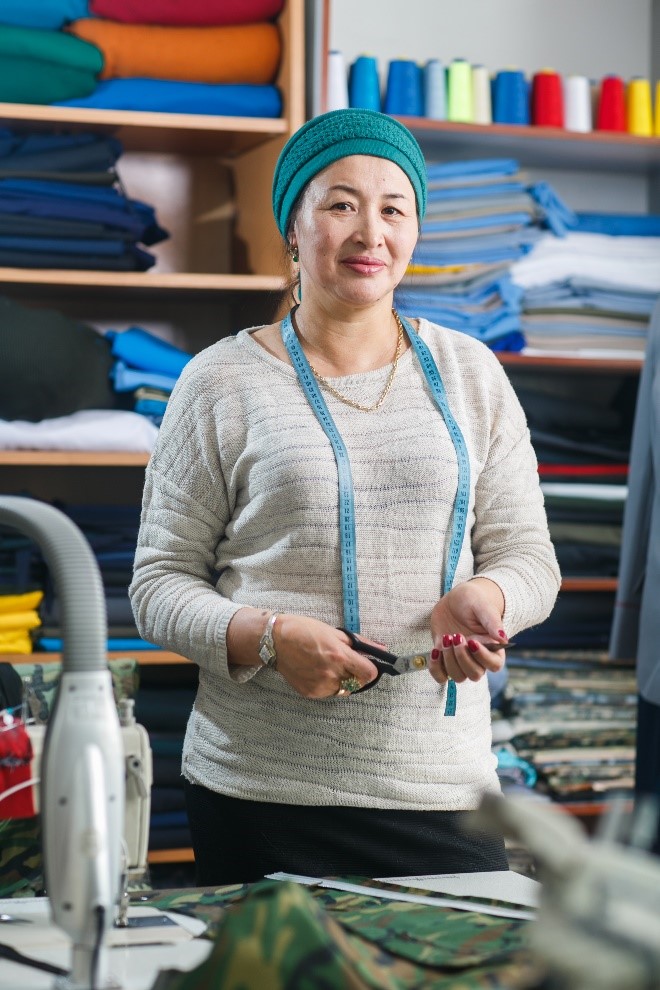Ultugan Kyzaibekova
Ms. Ultugan Kyzaibekova is an entrepreneur from Almaty, who owns a sewing workshop that produces wholesale clothing and uniforms. She has been a KMF client for 17 years. Ultugan first came across KMF when she had a business selling toys, shoes, cosmetics – anything that was in demand – at a flea market in Almaty. She started taking $100-$200 loans from KMF to purchase inventory. In 2000, upon the advice of an acquaintance who was in the sewing business, she decided to start selling clothes. She says “I was interested not just in selling, but in selling clothes of my own production. So, I went to dress-making courses and began to sew on a by-order basis: I picked up the fabric myself, took measurements. There came the first regular customers.” Today, Ultugan has her own registered SME that works as a subcontractor in major tenders for sewing uniforms for government agencies. In February 2017, she took out a loan of $30,000 from KMF to purchase laser equipment for embroidering patches, expanding her business by opening an embroidery shop.

KazMicrofinance, “KMF”, is a 20-year old financial institution providing loans to micro, small and medium-sized enterprises (SME). KMF provides small loans of $1000 on average to the underserved populations, particularly in rural areas, to bridge a large financial inclusion gap in Kazakhstan.
KMF has been a MicroVest portfolio company since 2014 and has received $15 million of funding from MicroVest. Over the period of MicroVest’s partnership, KMF’s loan portfolio has increased from $120 million to $207 million and the borrower base has almost doubled from 111,000 to 200,000. KMF has also become a significant job creater with a current employee tally over of over 1,700.
Today, KMF is the largest microfinance institution in Kazakhstan. KMF strengthened its corporate governance by bringing in two private sector investors in 2014. In addition, employees own 10% of the equity capital of the institution.